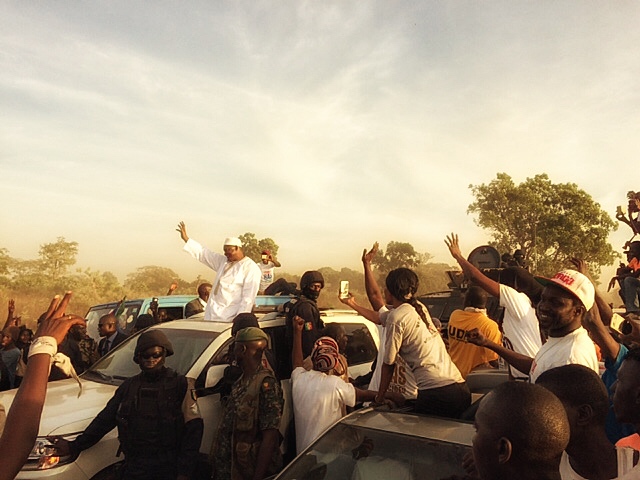
President Adama Barrow greeting the people. Photo by Katarina Höije
It finally became clear on January 21, 2017, that Yahya Jammeh, the long-serving autocratic president of The Gambia would step down and leave the country. The road to this point was a twisty one. Jammeh had lost the December 1, 2016, election to Adama Barrow (who represented a coalition of opposition parties). Although Jammeh, much to everyone’s surprise, initially conceded the election he quickly reverted to form and suggested that the election was not valid and called for a new one to be held–a position rejected by the opposition and the international community. Most notably, the Economic Community of West African States (ECOWAS) took a firm line and recognized Barrow as the legitimate president and suggested that they might use military force to oust Jammeh. As negotiations between the parties remained inconclusive,arrow and his associates travelled to Senegal where, on January 19 he took the oath of office at the Gambian High Commission in Dakar. Meanwhile, ECOWAS forces, consisting primarily of Senegalese troops with Nigerian air and naval backing, mobilized to enforce the election results. After a tense period that saw ECOWAS forces briefly enter the country only to pull back, Gambians–and West Africans–could breath a sigh of relief as the by now completely isolated Jammeh agreed to go into exile with not a drop of blood shed. In the evening of January 21, Jammeh boarded a plane for Equatorial Guinea. Continue reading